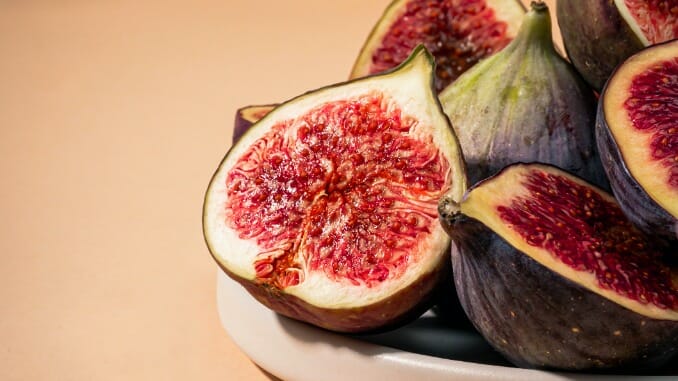The Horror Show of the Fig
Photo by Svitlana/Unsplash
In some circles, figs have gotten a bad reputation, perhaps due to their association with the sticky, boring cookies our grandmothers would keep stashed in the back of the pantry. The chokehold that Fig Newtons had on crunchy moms and senior citizens for decades cast a long shadow over American culinary history that may never be truly forgotten. But that bad reputation is wholly undeserved: Fresh figs are luxurious pockets of velvety, crunchy jelly, less messy than plums but equally as juicy. For those who love foods with interesting textures, taking a bite out of a fig is an unparalleled joy.
They’re gorgeous, too, and it makes sense when you consider that figs are technically not fruits but are actually inverted clusters of flowers. Because of this difficult arrangement, reproduction is a challenge for a fig tree — a challenge that requires a horror show of symbiosis to reach its natural conclusion. There’s a reason that many vegans refuse to eat the seemingly innocuous bloom.
Most flowers rely on wind or bees for pollination, but the fig does not have that luxury with its coy, inverted flowers. Rather, it requires the assistance of a self-sacrificing, pollen-laced female wasp ready to lay her eggs in a warm, welcoming nest safe from the elements. This wasp is in need of a home for her offspring, so she makes her way into the internal bloom of the male fig. It’s a tight fit — so tight that she loses her antennae and wings as she squeezes into the fruit. Once she gives birth, she will die inside the fig. Her wingless male offspring will mate with their sisters and then chew holes in the fig with their sharp teeth, allowing their female counterparts to depart their natal home and start the disturbing process afresh. The brothers have no wings, so they will succumb to their juicy grave just like their mother before them. Figs have long functioned as a symbol of fertility and prosperity across cultures, but that symbol all but completely ignores the downright brutal reality of the reproductive process of the fruit.
-

-

-

-

-

-

-

-

-

-

-

-

-

-

-

-

-

-

-

-

-

-

-

-

-

-

-

-

-

-

-

-

-

-

-

-

-

-

-

-








































